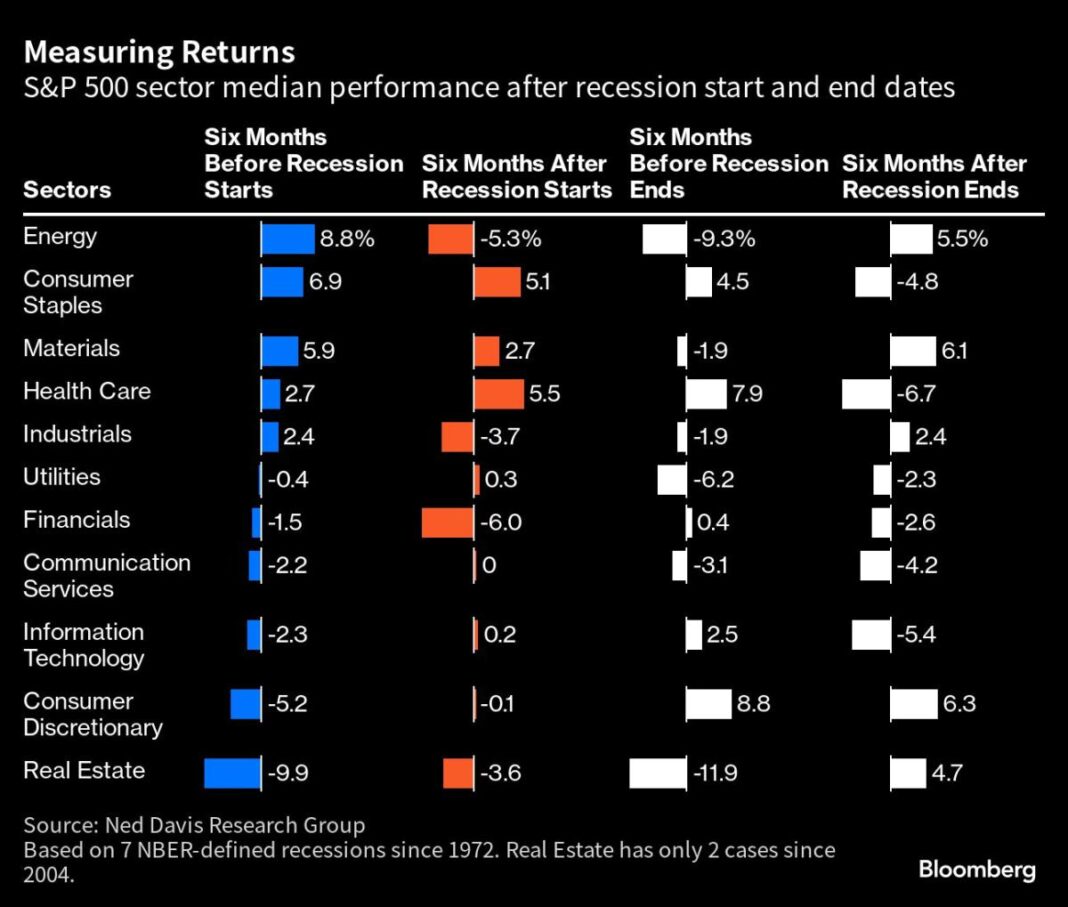(Bloomberg) — US small-cap and industrial stocks are dropping, typically signals of a recession, but in a year where equities have already beaten expectations some investors are dismissing the moves as little more than noise — for now.
Most Read from Bloomberg
The S&P 500 Industrials index peaked on Aug. 1 and is down about 8% since then, teetering on a correction after several major US carriers cut their profit outlooks for the third quarter on a sudden jump in oil prices. The small-cap Russell 2000 Index has lost more than 11% from its July 31 closing high, roughly twice the decline in the S&P 500 Index over the same time. Steep drops in small-cap and industrial stocks typically occur when the economy is in a recession.
There are other signs of trouble in the stock market. The S&P 500 Index is headed for its first quarterly loss in a year, just had its worst week since March 10, when Silicon Valley Bank collapsed, and has shed 2.8% since Wednesday, the day of the Federal Reserve’s policy announcement that featured the theme of “higher for longer” rates.
In response, investors are pulling money from equity funds globally at the fastest pace since December, Bank of America Corp. strategists say.
That said, there is hope for stocks. Earnings season is coming, which may matter more than rates for stock prices now according to a model from Bloomberg Intelligence. Companies are expected to post profit declines of just 1.1% in the third quarter, followed by gains for at least the next year, according to Bloomberg Intelligence data. Plus the Federal Reserve this week said it’s forecasting stronger economic growth than it expected just a few months ago.
“With earnings season only a few weeks away, we’re not seeing a lot of companies adjusting their earnings and revenue goals lower,” said Kim Forrest, founder and chief investment officer at Bokeh Capital Partners. “We don’t know when the recession is coming — eventually it will — but the largest US companies aren’t signaling an immediate threat.”
To some investors, the recent drops are little more than a buying opportunity. Forecasters surveyed by Bloomberg are predicting that economic growth will slow through the middle of next year, then pick back up again.
“It’s too soon to say the stock market is signaling a recession,” said Ed Clissold, chief US strategist at Ned Davis Research, whose firm has a year-end target of 4,500 on the S&P 500 and forecasts a chance that the US will slump into an economic slowdown in the first half of 2024. “If we are marching toward that, it would appear this would be at very early stages, but we need to wait a few more weeks to see where the year-end momentum is going.”
Small-caps shares sliding may signal expectations for slowing growth. Those companies, which are historically among the first to bottom before broader markets bounce higher, are closely tied to the domestic economy and tend to have less diversified lines of business than their larger peers, making them a riskier bet in times of economic uncertainty.
A complicating factor in looking at signals like small-cap stocks is how much the market had risen this year before malaise set in. The S&P 500 surged almost 20% through July 31. So while the index is down nearly 6% since then, it still has a long way to go before giving back all its gains for 2023 — and it’s not obvious what would trigger a big drop.
The other challenge is history. The last three times the S&P 500 shed at least 1% in both August and September, it rebounded in October, rising 8% in 2022, 8.3% in 2015 and 11% in 2011, according to Ryan Detrick, chief market strategist at Carson Group. Going back to the 1950s, the gauge has been higher in October in nine of the 10 times it’s lost at least 1% in August and September.
In addition, infrastructure spending and US companies moving more of their production capabilities back to North America are helping to create more business for industrial companies, and that’s revenue that isn’t as dependent on interest rates, said Jeff Cianci, director of research at Catherine Avery Investment Management.
“The valuations of the industrials and materials we buy are well below where they should be trading,” Cianci said. “The market is pricing in the risk of a downturn that we do not see.”
Most Read from Bloomberg Businessweek
©2023 Bloomberg L.P.


